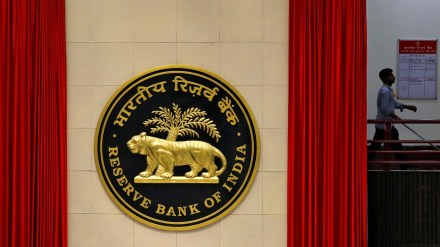Over the past few decades, India’s SMEs have come a long way in terms of understanding FX markets and risk management. Thus, some constraints can be eliminated so that more companies learn to use more tools
Happy birthday, RBI! For a 90-year old, you’re an inspiration — thank you. And, since it is your birthday week, there are a couple of gifts I would like from you for Indian companies, particularly small and medium enterprises (SMEs).
As you are more than aware, the volatility of the rupee has fallen to an all-time low. As a result of this, many companies, both small and large, have been wondering whether it makes any sense to hedge — exporters, since the premiums are so low (and hope of a weaker rupee springs eternal), and importers, seeing the rupee go nowhere over the past year or so.
To my mind, and I would suspect you share this belief, this is unhealthy — companies should never stay completely unhedged. And yet this is what is happening in a very large number of companies because of your current approach of “managing volatility”. Tangentially, this also flies in the face of one of the Prime Minister’s injunctions to you to make the rupee global — no global currency has the kind of volatility profile that the rupee has suffered over the past 12-15 months.
Thus, the first gift I look for is to permit some real volatility in the market so that companies do not forget about the reality that the defining factor of markets is that there is always risk.
The second gift I request is on behalf of SMEs, and it relates to the regulation that permits only companies with a net worth of more than `200 crore to use cost reduction strategies. Over the past few decades, India’s SMEs have come a long way in terms of understanding FX markets and risk management. Given this, I feel it would be timely that you eliminate this constraint so that many more companies are able to learn to use more tools, like, say, zero cost range forwards, for risk management.
I understand that this is in place, as are many other regulations, to protect companies from their own lack of knowledge multiplied by the eagerness with which banks enjoy selling lower liquidity products as it enables them to charge sometimes outrageous margins (bit.ly/3U1vaJr). However, with the dramatic increase in volumes in the USDINR options market, range forwards are by now widely used (by larger players), and pricing is nowhere near as non-transparent as for other derivatives, like interest rate swaps. Again, many SMEs understand hedging reasonably well on their own or through consultants. And, most importantly, as the very name suggests, cost reduction is something that everybody needs to pursue, particularly when it also enables reducing risk.
The accompanying graphic and an example explain the issue. Say, today’s spot rate is 83.40, the 6-month forward rate is 83.95, and the company has a worst case budgeted rate for imports of 84.25. The company could buy forward at 83.95 and save 30 paise from its budgeted cost, except that it would lose opportunity if the rupee remained broadly in its last one-year range, ending up, say, somewhere between 82.75 and 83.60 when the payment was due. Looking at this picture, many companies decide, albeit nervously, not to hedge. On the other hand, if they were permitted to, most of these would choose to protect themselves fully even if it meant having to live with a smaller potential gain — most companies are intrinsically risk averse.
Enter the range forward. Here the company buys a call option at 84.25, ensuring its worst case budgeted cost is protected. To defray the cost of the option it sells a put at 83.70; the strike price of the sold put is calculated to where the premium earned is exactly equal to the cost of the call (at 84.25), which is why it is called a zero-cost range forward. Thus, the company would be fully protected against rupee weakness and would be able to benefit to some degree (up to 83.70) in the case of rupee strength.
Sophisticated companies generally use range forwards in combination with forwards and also keep some part of their exposures unhedged to enable the best balance between risk and return. To be able to meaningfully use such instruments, companies need to have strong monitoring processes and, of course, understanding of and access to derivative instruments.
This is why we are requesting the RBI to celebrate its birthday by providing SMEs in India with a gift that can keep on giving.
Jamal Mecklai, CEO, Mecklai Financial www.mecklai.com
